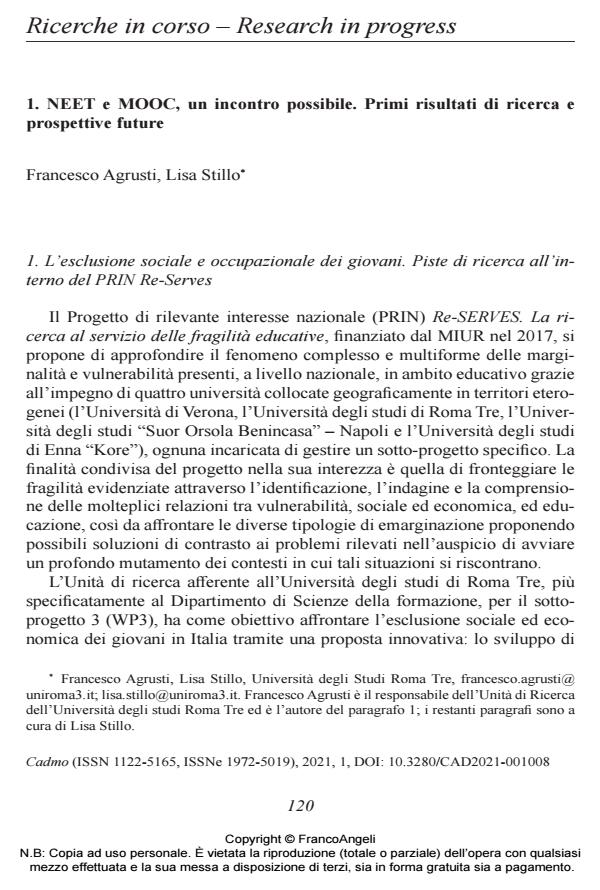Research in progress
Journal title CADMO
Author/s Francesco Agrusti, Lisa Stillo
Publishing Year 2021 Issue 2021/1
Language Italian Pages 11 P. 120-130 File size 158 KB
DOI 10.3280/CAD2021-001008
DOI is like a bar code for intellectual property: to have more infomation
click here
Below, you can see the article first page
If you want to buy this article in PDF format, you can do it, following the instructions to buy download credits

FrancoAngeli is member of Publishers International Linking Association, Inc (PILA), a not-for-profit association which run the CrossRef service enabling links to and from online scholarly content.
Francesco Agrusti, Lisa Stillo, Ricerche in corso in "CADMO" 1/2021, pp 120-130, DOI: 10.3280/CAD2021-001008